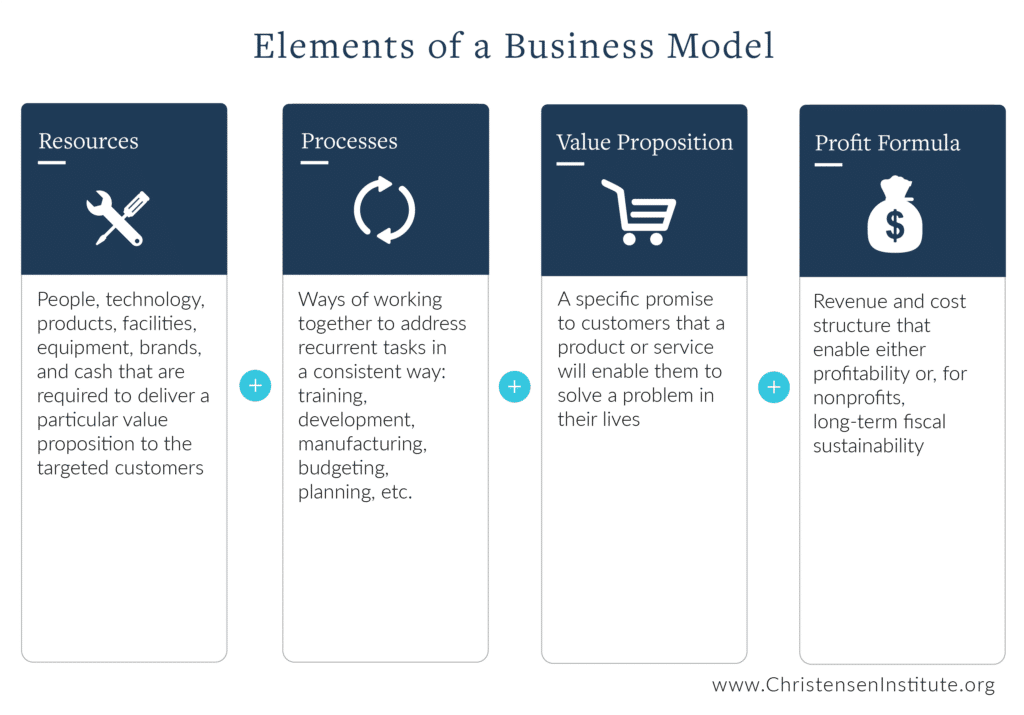The century-old business model of manufacturing and selling cars may increasingly be challenged by the growing popularity of shared mobility services. These services include car-sharing (e.g. Zipcar), ride-sharing (e.g. Uber), and peer-to-peer sharing (e.g. Turo). Dieter Zetsche, Chairman of the Board of Management of Daimler AG and head of Mercedes-Benz Cars, has said:
“As pioneers in automotive engineering, we will not leave the task of shaping future urban mobility to others. There will be more people than ever before without a car who will still want to be extremely mobile.”
However, automakers face a daunting challenge: how do they participate in the new world of shared mobility when all they’ve done is primarily manufacture and sell cars? Automakers that aim to be mobility providers will need to build fundamentally different business models from those that have fueled them for the past century. And successful business model innovation requires carefully deconstructing the key elements of a business model and analyzing each of them in turn. In this piece, we examine the important elements of a mobility provider’s business model and offer insights into how an automaker could successfully build a new one.
A business model isn’t a black box
Business models consist of four tightly-coupled elements: resources, processes, a value proposition, and a profit formula. All of these elements are defined in the graphic below.
If we compare the key elements in the business model of a traditional automaker with that of a mobility provider, it’s clear that they are quite different.
Resources
For traditional automakers, engineers, factories, and the relationships with suppliers and dealerships constitute some of their key resources. On the other hand, for ride-sharing services, the drivers, riders, and the intangible algorithms that facilitate demand management constitute some of their key resources; while for car-sharing services, the car and the IT systems that enable reservations and payments fit that bill. Finally, for peer-to-peer car-sharing businesses, the platform, owners and renters are vital to delivering their value proposition.
Processes
The automotive and mobility industries operate at different clock speeds. Automakers generally take about three to five years to develop a new car, whereas shared mobility services typically have much faster development cycles to introduce their new offerings. Furthermore, shared mobility providers require much more flexibility in their processes as they introduce new services and test their assumptions against the market. On the contrary, traditional automakers largely employ time-tested, well-oiled processes thanks to the maturity of their markets.
Value proposition
While the traditional automaker aims to build, sell and service a safe and reliable car, the mobility provider promises to orchestrate seamless trips.
Profit formula
Automakers earn the majority of their revenue through the sale of cars and aftermarket parts. However, mobility providers primarily earn their revenue by facilitating trips. Also, the automotive business is asset intensive, however, ride-sharing and peer-to-peer car sharing businesses are asset light.
The need for an autonomous business unit
As automakers engage in business model innovation in order to compete in the mobility game, some may be tempted to simply create a new mobility unit that is closely tied to the established business. However, our research suggests that efforts to create a fundamentally different business model within the core business almost always fail unless the new business is completely autonomous. In other words, the new unit’s metrics for performance evaluation, resource allocation, etc., shouldn’t be linked to the core business.
Why? The resource allocation process, which acts a filter to allocate resources to innovations, almost always prioritizes the core business, which offers a well-defined market with tangible returns. In contrast, the emerging business may take considerable time to satisfy the growth and profit margin needs of the company.
By setting up an autonomous unit, the core business can continue to focus on doing what it does best: building and selling cars. Meanwhile, the mobility unit will have the much-needed freedom to create the processes and cost structure required to deliver the new value proposition profitably, and to take on the new challenge with gusto. GM is one example of an automaker that seems to be heading in the right direction with the creation of Maven, its mobility arm. So long as Maven isn’t constrained by GM’s dominant business model, it will be well positioned to compete in the mobility space.
Automakers are not precluded from positioning themselves to play and win the shared mobility game. Armed with a century’s worth of experience in meeting varied customer needs and established relationships across the industry, my bet is that they’ll play a pivotal role in redefining modern transportation, provided that they make the right strategic moves.




